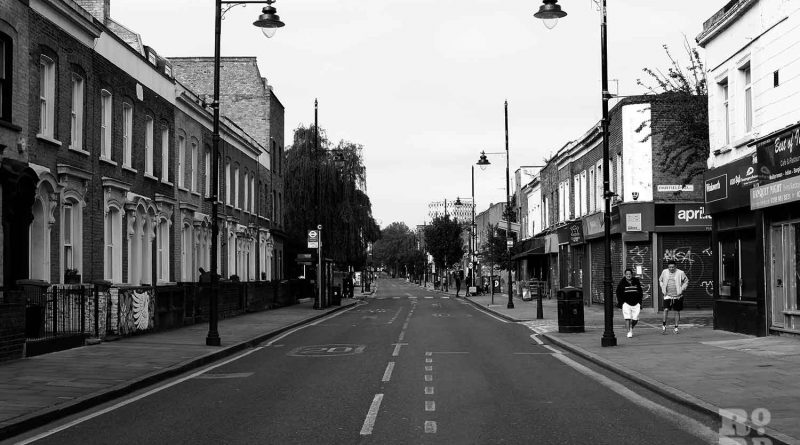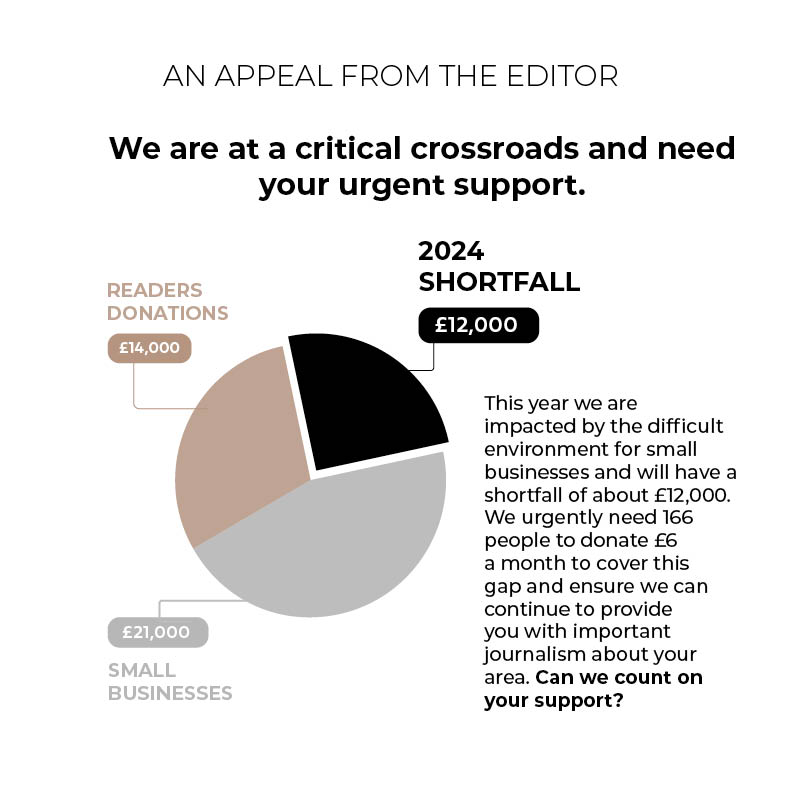Will Covid-19 be the death or rebirth of the high street?
Covid-19 is changing the face of our high street. With many of our shops still shut and more months of disruption to face, will this global crisis be the death or the rebirth of the high street?
On Friday 23rd March, when the Prime Minister ordered shops and bars to close, you could have been forgiven for thinking this would be the final blow for the high street, which in recent decades has been struggling to reinvent itself in the face of online shopping.
Twenty five percent of UK businesses, according to ONS data, closed as a result of that order and March saw the largest monthly drop in retail compared to the same time last year.
But what did the lockdown look like for Roman Road? Many local businesses, including Muxima, reported difficulties in obtaining business loans in time to pay April’s rent and salaries. Meanwhile others, such as Quarantacinque, switched to being a delivery service virtually overnight. But many businesses swallowed the costs and closed; either choosing to take a break, like SNAP, or choosing to work on their businesses – like Mae and Harvey, who are expanding their cafe.
But don’t cue the pall-bearers just yet. For all its economic devastation, the changes to human activity caused by lockdown might be reshaping our high street in its favour no less, laying the foundation for a more resilient post-Covid future.
You may have noticed that, despite that lockdown, it seems like more people are out walking and shopping on the streets. Roman Road area is a largely residential neighbourhood – people live here, but many commute to Central London for work. By having to spend more time in the area where we live, people are discovering the small retail gems – the grocery shops, the corner shops that we have in and around our high street. Increased demand for food and other services means that there has been stronger footfall to our corner shops and convenience stores, with consumers turning to them for items that they may have once gotten at a supermarket chain.
There is also a deeper, social change happening here; you may have also noticed more people, strangers, talking to each other. In part, this is due to the fact that in addition to an increased volume of people around the high street, we are also spending more time in the high street.
After all, the rare moments we do leave our homes, we are spending that time in our shared public spaces albeit with social distancing – queuing safely together, going on daily walks together. And because we are all collectively existing in this strange, unknown world, this is a uniting experience that bonds those who were once unacquainted. All of a sudden, we all have something to talk about.
We have seen residents spring into action to aid members of their community, from patronising local businesses affected by the lockdown to getting medication for elderly neighbours from pharmacies. The social bonds between everyone are deepening, and it is this very goodwill and willingness to support each other that we must count on if we, as a neighbourhood, are to weather this crisis.
After all, the foreseeable future will be hard. With councils across England facing up to estimated five billion pound losses to their budget over the next year, and a looming fear of raised rents to make up for current rent holidays compounded with loss of revenue, it means even when lockdown ends, many of our high street businesses will still be under threat.
But there is hope. The community spirit that came out of the Covid-19 has already laid the groundwork to build a stronger high street. Businesses have turned to online communities on social media for patronage. They have quickly adapted on the fly to meet the needs of customers while operating within government guidelines, switching business plans and operations within a matter of days.
Cafes like Sazzy and Fran, Mae and Harvey and QuarantaCinque turned into makeshift delis and convenience shops. We even saw traditional market vendors, like Mark Herbert, turning into a digitally savvy grocery delivery service, taking orders through Instagram.
We saw a surge of goodwill in residents wanting to support their local businesses with actions as well as words. Instead of brunching at their favourite cafe, residents used their delivery service instead. Our Instagram feed flooded with pictures and hashtags encouraging people to #shoplocal. If this increased closeness and loyalty between local shops and residents continues, especially as nail bars and hair salons are set to open again, then there is the very real possibility of our high street coming back from the brink even stronger.
You may have come across the economic theory of the inverted triangle – the hope that once recovery starts, the economy will bounce back as sharply as it has fallen. If current trends of supporting local businesses continue after they start to re-open their doors, then this might very well be the case for our high street.
Although we cannot yet predict with any certainty how changes in our longer-term behaviours might impact the high street due to many unknown factors (how long will social distancing measures last, will people continue to work from home?), one thing seems inevitable – our high street will change. Could we see more businesses offering takeaways, even changing their shops to serve people out of windows? Will we see more freelancing cafes as people work more regularly from home?
These are things we cannot predict, but we can build on the new bonds and relationships we have made during lockdown and continue to support our local high street, choosing to shop more often at our well-stocked corner shops and convenience stores, rather than ordering online shops from supermarkets; choosing to eat out more often within walking distance of our home, and choosing to support the valiant attempts being made by local shops to adapt to our new post-pandemic world.
While we cannot gloss over the fact that coronavirus has had a devastating impact on not just the national and global economy, but local economies far and wide, the silver lining that shines through the dark cloud is the renewed appreciation for local living. A closer-knit neighbourhood, one where we know neighbours and shopkeepers by name, where we care for the vulnerable, and where we shop and socialise locally, is one that thrives both socially and economically.
If, when life begins to emerge from lockdown, we can retain some of the more positive qualities of living in a smaller world, then there is hope that this is not death-knell for the high street, but the very crisis it needed to reinvent itself.
Acknowledgement: Thanks to Rosie Vincent, Director of Roman Road Trust; Eddie Blake, Architect and Chair of Roman Road Trust, Sarah Allan, Marco Zed and Lee Sargent from the Roman Road Bow Neighbourhood Plan, for their insights.
If you liked this, you might also like to read about the campaign to create a key community space that will transform our high street.


